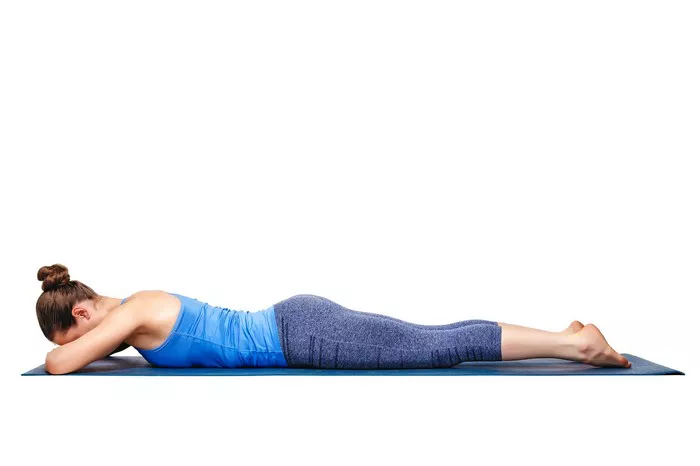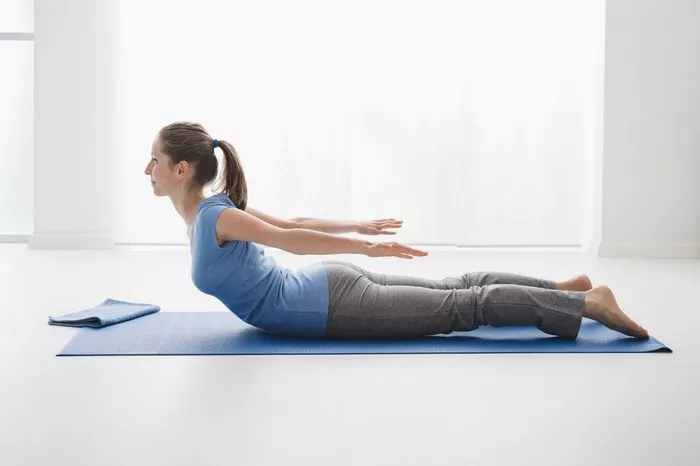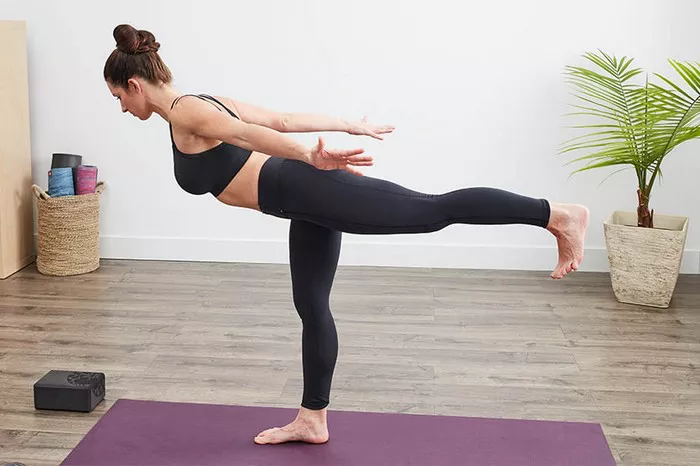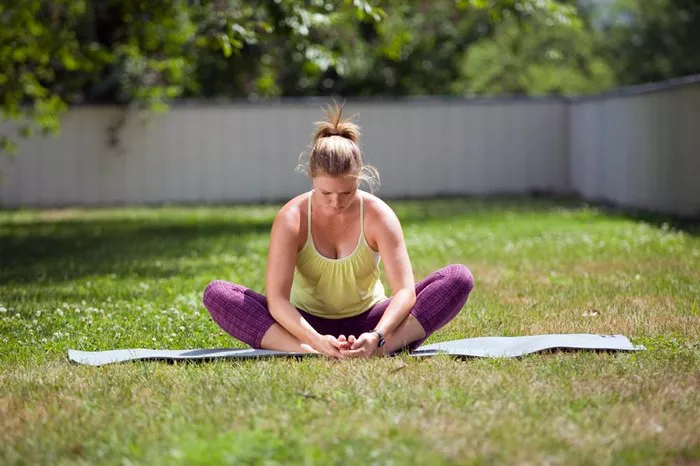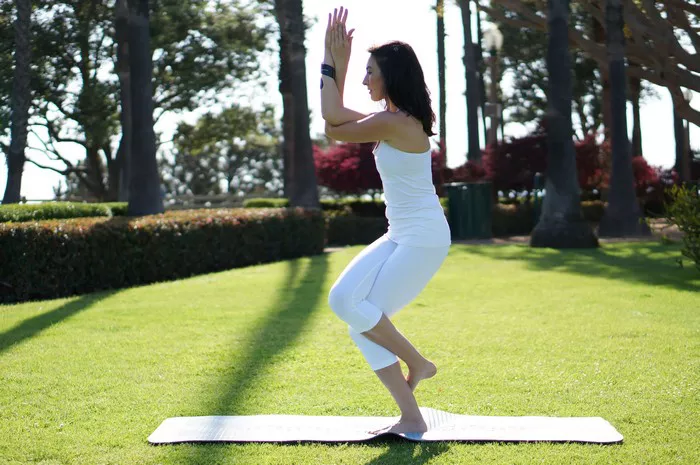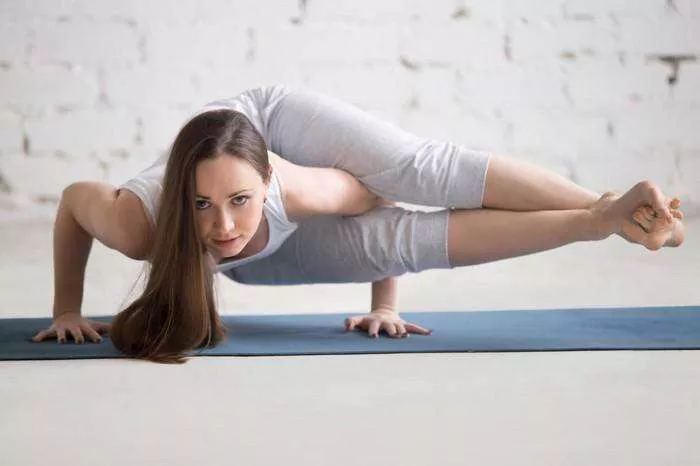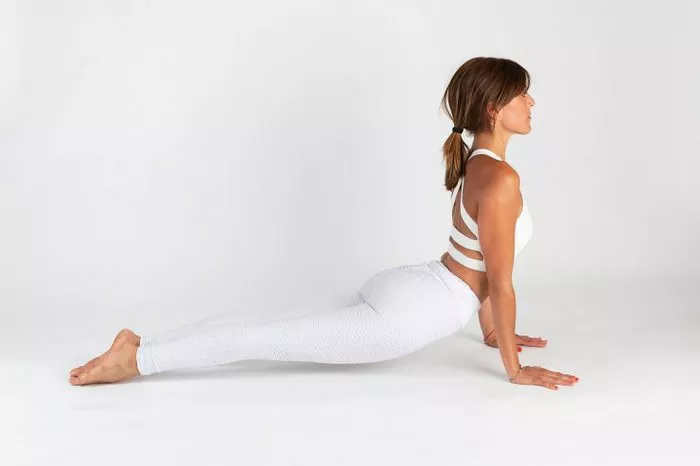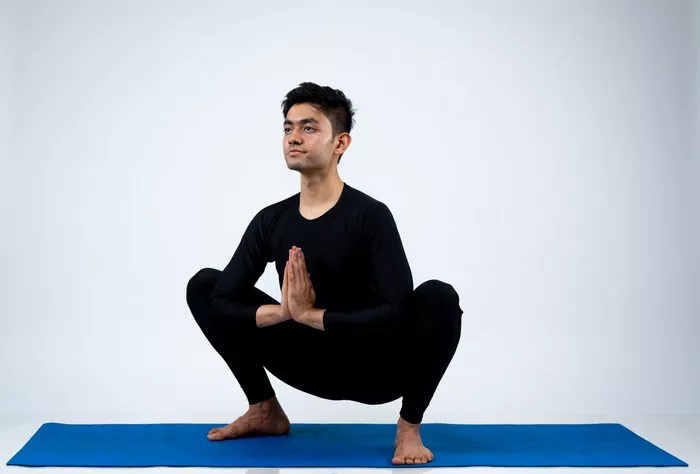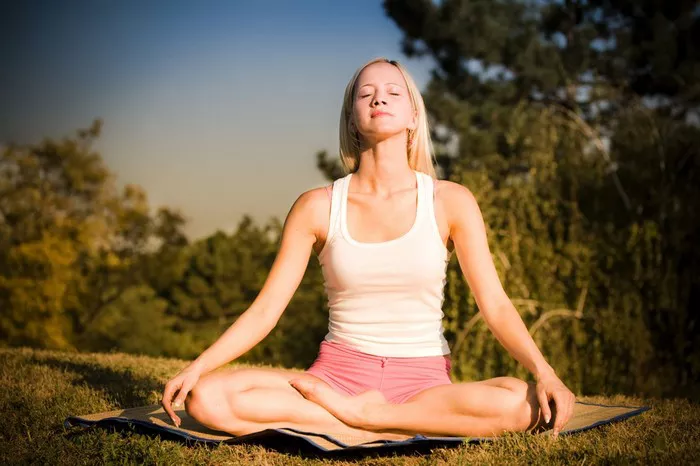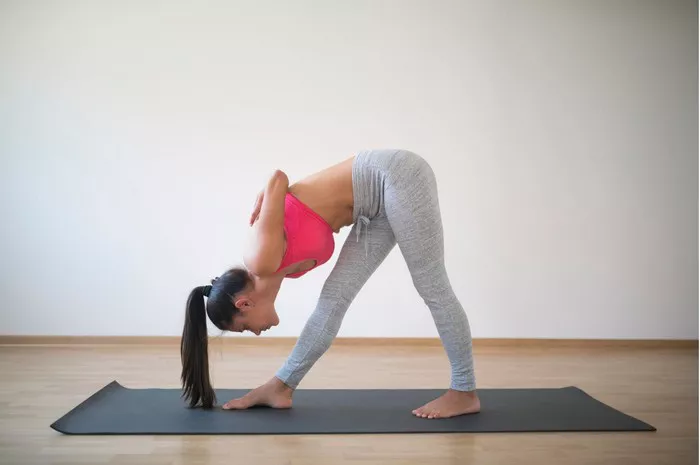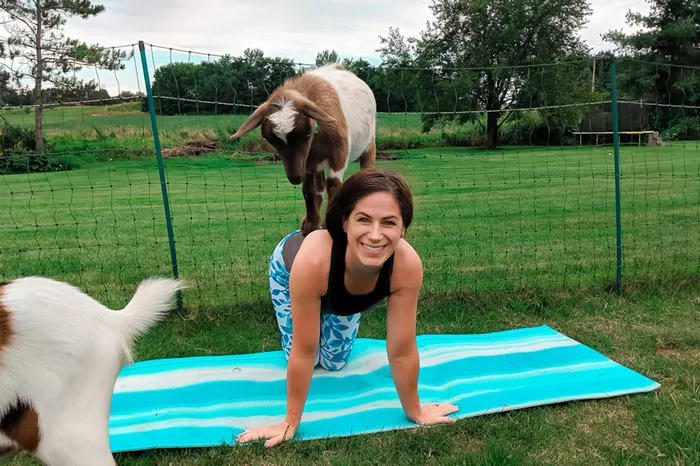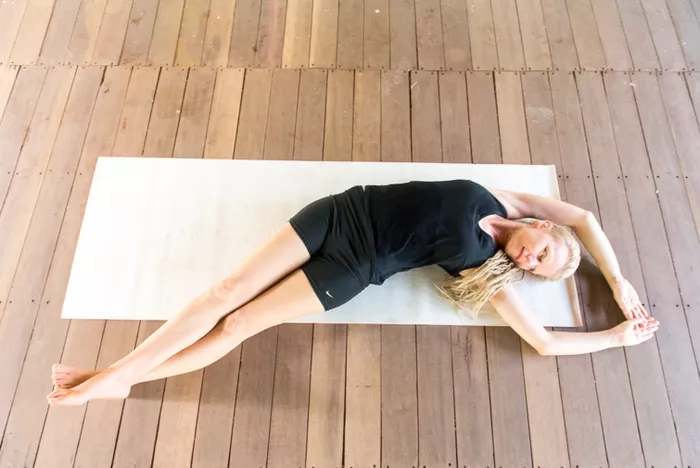Perimenopause refers to the transitional period leading up to menopause, typically occurring in women aged 40 to 55. This phase can span several years, characterized by fluctuating hormone levels, irregular menstrual cycles, hot flashes, mood swings, sleep disturbances, and other physical and emotional symptoms. As hormone levels shift, many women seek holistic and non-invasive ways to manage these changes. Yoga therapy emerges as a highly effective approach, offering both physical and emotional relief. With its combination of breath control, physical postures, and mindfulness, yoga helps support hormonal balance, reduce stress, and promote overall well-being.
Unlike conventional treatments that often focus on hormone replacement, yoga therapy targets the root causes of imbalance through movement, relaxation, and awareness. Scientific studies suggest that consistent yoga practice may alleviate common perimenopausal symptoms such as anxiety, insomnia, fatigue, and joint pain. As a result, yoga therapy is gaining popularity among health professionals and individuals alike for its ability to empower women during this significant life phase. Next, this article will list the Top 9 Yoga Therapy for Perimenopause.
1. Restorative Yoga
Restorative yoga is a gentle form of yoga that emphasizes deep relaxation through the use of props like bolsters, blankets, and blocks. During perimenopause, when energy levels may be low and stress levels high, restorative yoga allows the body to rest and recover. Each pose is held for several minutes, promoting deep release in the muscles and nervous system.
This style of yoga activates the parasympathetic nervous system, encouraging the body to enter a rest-and-digest state. For perimenopausal women, this can lead to improved sleep, reduced anxiety, and a general sense of calm. Common restorative poses like Supported Child’s Pose and Legs-Up-The-Wall help to ease fatigue and support hormonal regulation.
2. Pranayama (Breath Control)
Pranayama, the practice of breath regulation, is a foundational aspect of yoga therapy. It plays a significant role in calming the nervous system and balancing energy. During perimenopause, hormonal changes can cause irritability, anxiety, and hot flashes. Pranayama techniques like Nadi Shodhana (alternate nostril breathing) and Sheetali (cooling breath) are especially beneficial in addressing these symptoms.
Controlled breathing techniques help regulate the flow of prana (life force energy), promoting mental clarity and emotional stability. Regular practice of pranayama can lower blood pressure, improve lung capacity, and ease the physiological stress responses that are often heightened during perimenopause. It’s an accessible practice that requires no equipment and can be done anywhere.
3. Yin Yoga
Yin yoga is a slow-paced style that targets the deep connective tissues such as ligaments, joints, and fascia. Poses are typically held for three to five minutes, fostering flexibility and inner stillness. This practice is especially valuable for perimenopausal women dealing with stiffness, joint discomfort, and mood fluctuations.
Because it emphasizes passive stretches and meditative awareness, yin yoga encourages introspection and emotional processing. Many women find that yin yoga helps them reconnect with their bodies during a time of significant change. It also supports adrenal health, which is vital since adrenal glands play a secondary role in hormone production post-menopause.
4. Hatha Yoga
Hatha yoga combines physical postures (asanas), breath control (pranayama), and meditation to create a balanced yoga practice. It is particularly suitable for beginners and those looking for a moderate-paced routine that emphasizes alignment and breath awareness. During perimenopause, Hatha yoga supports physical strength, mental focus, and emotional equilibrium.
Regular Hatha practice can help regulate menstrual cycles, reduce the severity of hot flashes, and improve mood stability. Asanas like Warrior II, Tree Pose, and Bridge Pose build strength, enhance balance, and improve circulation. Meditation and guided relaxation segments further help in managing stress and enhancing sleep quality.
5. Yoga Nidra (Yogic Sleep)
Yoga Nidra is a deeply restorative practice that guides the practitioner into a state of conscious relaxation. Unlike typical meditation, Yoga Nidra involves lying down and following a structured meditation script. For perimenopausal women struggling with insomnia, anxiety, and fatigue, Yoga Nidra can be a transformative tool.
By activating the parasympathetic nervous system, Yoga Nidra allows for deep mental and emotional healing. Studies have shown that a 30-minute Yoga Nidra session can be as restorative as several hours of sleep. The practice also fosters introspection and emotional resilience, supporting women as they navigate the psychological aspects of hormonal change.
6. Vinyasa Flow
Vinyasa Flow involves a series of poses linked together with breath in a flowing sequence. Though more dynamic than other forms, Vinyasa can be adapted to meet the needs of perimenopausal women. It helps boost cardiovascular health, build muscle strength, and increase flexibility. The rhythmic movement also supports detoxification and improves mood.
Practicing Vinyasa helps regulate the endocrine system and maintain a healthy metabolism, both of which are crucial during perimenopause. By synchronizing movement with breath, it also enhances mindfulness and body awareness. A gentle Vinyasa routine with modifications can be a powerful way to energize the body and soothe the mind.
7. Kundalini Yoga
Kundalini yoga combines dynamic breathing techniques, physical postures, chanting, and meditation to awaken the energy at the base of the spine. This practice is known for its powerful effects on the nervous system and endocrine glands. During perimenopause, Kundalini yoga can support hormonal balance, mental clarity, and emotional healing.
Practices such as “Sat Kriya” and “Kirtan Kriya” are particularly helpful in managing mood swings, brain fog, and fatigue. Kundalini yoga encourages spiritual growth and inner awareness, offering a sense of purpose and empowerment during a transitional life phase. However, it is recommended to learn Kundalini yoga under the guidance of an experienced instructor due to its intensity.
8. Iyengar Yoga
Iyengar yoga emphasizes precision and alignment in each posture, often using props to support the body and enhance performance. It is a therapeutic form of yoga that can be particularly beneficial for women dealing with physical discomfort, joint issues, or limited mobility during perimenopause.
By focusing on structural alignment and breath control, Iyengar yoga helps improve posture, reduce pain, and increase overall body awareness. This style of yoga also fosters mental discipline and concentration, aiding in emotional balance. Poses like Supta Baddha Konasana and Viparita Karani are frequently used to support relaxation and hormonal balance.
9. Meditation and Mindfulness Yoga
Mindfulness-based yoga incorporates meditation techniques to foster awareness, presence, and acceptance. For women facing emotional volatility and mental fatigue during perimenopause, this integrative approach offers substantial relief. Mindfulness yoga helps individuals tune into their body’s signals, accept change, and manage stress more effectively.
Meditative practices like body scans, guided visualizations, and breath-focused awareness can significantly reduce anxiety and enhance emotional regulation. Over time, mindfulness yoga nurtures self-compassion and resilience, helping women navigate perimenopause with grace and clarity. Combining movement with mindfulness cultivates a deeper connection between the mind and body.
Conclusion
Yoga therapy offers a comprehensive, holistic approach to managing the physical, emotional, and psychological symptoms of perimenopause. From the deep relaxation of restorative and Nidra yoga to the energizing flows of Vinyasa and Kundalini, each style provides unique benefits. By integrating breathwork, mindfulness, and targeted physical postures, yoga supports hormonal balance, stress relief, and overall vitality.
Whether you are just beginning your perimenopausal journey or are deep in the transition, incorporating yoga into your daily routine can empower you to handle changes with greater ease and confidence. As always, it is wise to consult with a healthcare provider and a certified yoga therapist to create a practice that meets your specific needs.
FAQs
Q1: How often should I practice yoga during perimenopause?
A1: Aim for at least 3-5 times a week. Consistency is key to experiencing the benefits. You can mix styles depending on your energy levels and symptoms.
Q2: Can yoga replace hormone therapy?
A2: Yoga is not a direct replacement for hormone therapy but can complement it effectively. Always consult your healthcare provider before altering any prescribed treatment.
Q3: Are there any yoga poses to avoid during perimenopause?
A3: Poses that are overly strenuous or heat-inducing might exacerbate hot flashes. Always listen to your body and work with a qualified instructor.
Q4: How soon can I expect results from yoga therapy?
A4: Some benefits like relaxation and better sleep can be immediate. Long-term changes in mood, flexibility, and hormonal balance may take a few weeks to months.
Q5: Is it necessary to attend a yoga class, or can I practice at home?
A5: While classes offer guidance and community, practicing at home with the help of videos or a routine plan can also be effective. Ensure proper form and safety, especially when starting out.
Related Topics:

